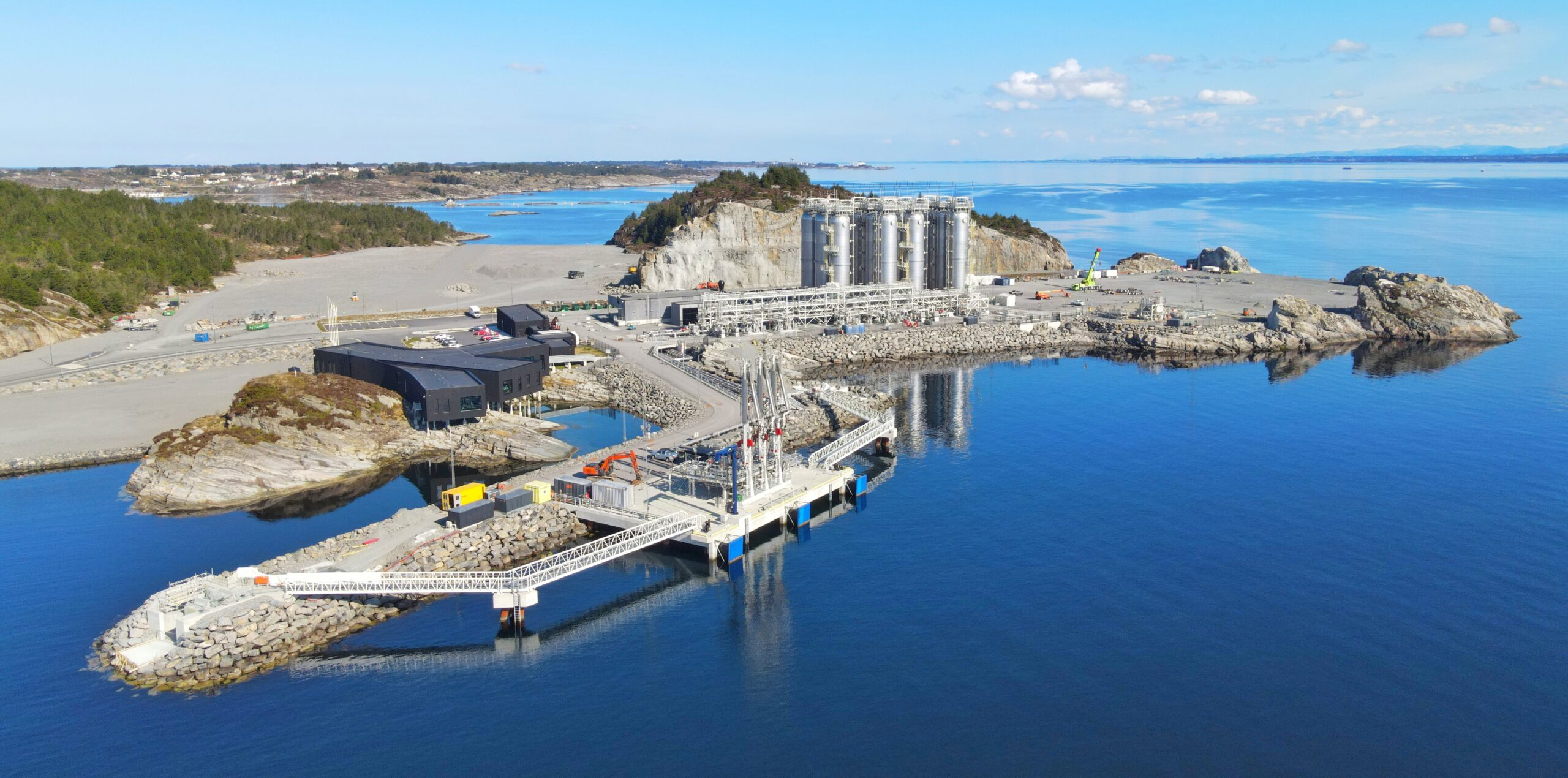
26.09.2024
Northern Lights: The First Part of Longship is Launched
Today marks the opening of the Northern Lights facility in Øygarden, ready to receive CO2 from emission sources both nationally and internationally.
Northern Lights is a central part of the CCS chain in the Longship project. The event in Øygarden is attended by representatives from government and industry – locally, nationally, and internationally.
With this facility, Northern Lights has established the world’s first open and flexible infrastructure for CO2 storage. This allows industrial players, both in Norway and internationally, to utilize the storage services without needing to build their own storage facilities. Northern Lights’ capacity in the first phase is 1.5 million tons of CO2 per year, with plans for significant expansion.
Equinor, Shell and TotalEnergies
Northern Lights is a collaboration between Equinor, Shell, and TotalEnergies, responsible for the transport and storage of CO2 in the Longship project. Northern Lights receives CO2 from various industrial sources and transports it by ship to Øygarden. The CO2 is then injected into a reservoir in the North Sea, consisting of porous rock layers with dense shale layers above, more than two kilometres beneath the seabed, where the CO2 can be safely stored permanently.
Northern Lights plays a key role in the Longship demonstration project. Equinor has been a pioneer in exploring offshore CO2 storage and was early in identifying a suitable storage site in the North Sea. In 2017, Shell and TotalEnergies joined as partners, forming the Northern Lights Joint Venture. In 2020, the government announced support for Longship, committing to co-finance Northern Lights as part of the CCS initiative. This made it possible to move from the planning phase to the actual construction of the facility in Øygarden. Construction began in 2021. Despite challenges such as the pandemic and delays in various supply chains, the project has been completed within budget and on schedule.
Throughout the process, Northern Lights has worked closely with local authorities and the community in Øygarden, focusing on ensuring local benefits in terms of jobs and skills development.
Broad Collaboration
Longship is a demonstration project, aiming to show that a full-scale CCS chain is achievable. In addition to Northern Lights, Longship includes Heidelberg Materials’ cement plant in Brevik and Hafslund Celsio’s waste-to-energy plant at Klemetsrud in Oslo.
The cement industry is one of the largest sources of industrial CO2 emissions globally. The plant in Brevik aims to become the world’s first cement plant with full-scale CO2 capture. The facility will capture 400,000 tons of CO2 per year, representing about half of the plant’s total emissions. The plant in Brevik is seen as a pioneer, demonstrating that CCS is possible in a sector with very high emissions. The goal is for the facility to be ready by December 1st this year.
Hafslund Celsio’s waste-to-energy plant at Klemetsrud in Oslo has one of the largest CO2 emissions in its sector. The facility captures CO2 from the incineration of waste that would otherwise be released into the atmosphere. The project’s goal is to reduce emissions by around 350,000 tons of CO2 per year. In April 2023, Hafslund Celsio decided to pause its capture project to evaluate solutions related to cost reductions. This does not affect the completion of Longship as a full CCS chain. Hafslund Celsio is now working on a decision basis for the way forward.

Realizing Benefits
As part of the agreement with the state and in parallel with the development, the industrial players share their knowledge with the world. This is done through numerous visits to the facilities by political leaders, regulators, industry, and media – both nationally and internationally. This is an important part of the benefits realization work in the wake of Longship. Northern Lights aims to drive technology development and cost reductions throughout the entire CO2 management chain – making CO2 management accessible to governments and industrial players. There are already several examples of this in Europe. At the same time, Northern Lights contributes to business development at home, especially around the facility in Øygarden.
The Role of Gassnova
Gassnova was established in 2005 to promote the development of CO2 management in Norway. The state-owned enterprise is the government’s advisor on CCS-related issues and plays a crucial role in coordinating collaboration between industrial players in Longship. Today, Gassnova oversees the development projects on behalf of the state, which finances about 80 percent of Longship. At the same time, the enterprise ensures that the experiences from Longship are documented and shared with subsequent projects. Through its role, Gassnova is central to bringing CCS technology from research and pilot projects to full-scale implementation.
– The opening of the Northern Lights facility in Øygarden is an important part of Norway’s efforts against global climate change. With Longship, we demonstrate how the combination of technological innovation, public support, and good collaboration can lead to real emission reductions. We see that a number of subsequent CCS projects are under planning. Europe is now developing policies that facilitate CCS, says Harald Anvik, Gassnova’s head of Longship project follow-up.
Gassnova congratulates Northern Lights on today’s opening. This is an important milestone towards the launch of the entire Longship by 2025.
